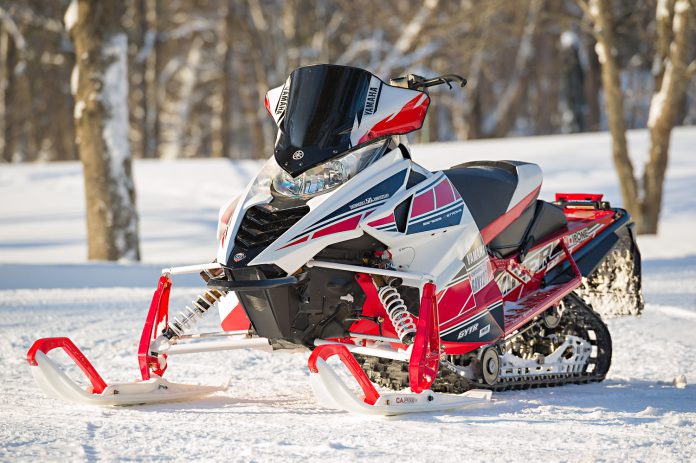If there’s one thing Yamaha may be guilty of, it is not changing enough.
Clearly ten years for the Vector and Apex was a too-long-run through the showrooms and when the manufacturing agreement with Arctic Cat came into play four years ago we felt confident Yamaha would keep up with market changes and deliver significant new-ness more frequently.
As a result of this thought process, Model Year 2019 just may be Yamaha’s year. Listen up.
HERE’S THE BEEF
The Viper has become familiar – real familiar – and if there’s one thing we know to be true about the new sled marketplace, the latest and greatest sells first and sells most.
So what does the Viper look like in 2018? It looks really good and has since its intro back in 2014. To Yamaha’s credit, the melding of Cat’s production talents with its own engine building expertise has been a decided win for the company and its dealers.
The Viper scores big on reliability and has proven tough, durable and worthy of carrying a Yamaha logo. The 1049 triple cylinder EFI 4-stroke is still among the best 4-stroke engines in this business producing righteous power from engagement to full whack. In fact, this engine’s performance is legitimately comparable to a 600 2-stroke.
WISH LIST FOR 2019
We’re hoping Yamaha includes its new beefed up, overdrive, turbo primary and roller cam secondary on the Viper for MY19. While the Yamaha clutch duo on the current Viper is effective, the secondary is still not a roller design. There’s potential for even better acceleration with a roller secondary.
We also think there’s room on the Viper for the 1049’s fully developed drive-by-wire (DBW) throttle that’s currently in use on the Vector. The Vector has to be approaching the end of its production life and the DBW throttle should now be a part of the Viper’s engine control system. It is completely transparent, creating no throttle lag or negative side effects, just nice, light and linear throttle actuation.
One issue we’d like Yamaha to address is a move to a more compliant brake pad material on the drive axle mounted hydraulic brake caliper. This chassis is noted for requiring a rather heavy pull on the radial master cylinder lever and also for a lack of “feel” or modulation.
Ski-Doo has suffered from the same issue with its drive axle brake but has made incremental improvements to the over-all feel and effort required at the lever.
In terms of ride compliance there are two pieces of advice we’ll offer those considering a Viper. First, don’t leave the showroom without QS3 Fox dampers up front and on the rear arm. Second, go for the 137-inch Viper as it, in combination with the QS3 shocks, delivers hands-down the best ride in Yamaha’s fleet.
The Slide Action skid out back in combination with the 3-position QS3 shocks can be tuned to provide an excellent ride for a variety of pilots and the 137-inch skid bridges moguls and noticeably reduces trail chatter better than the 129.
If you’re sold on 4-strokes, the SRViper should be a serious contender in your quest for a new ride. If you’re not sure if you’re ready to drink the 4-stroke Kool-Aid just yet, then you need to give the Viper a try. Other than over-all machine weight we feel it is among the lowest compromise 4-stroke sleds available.



